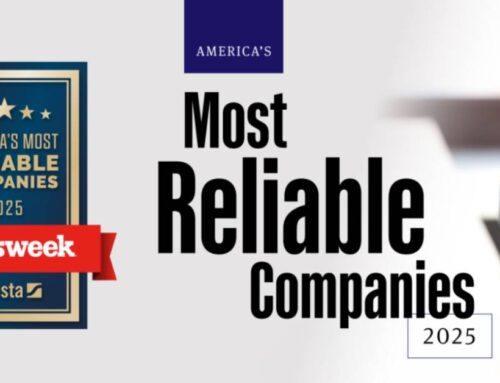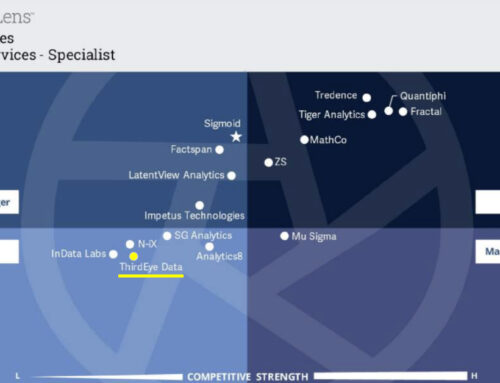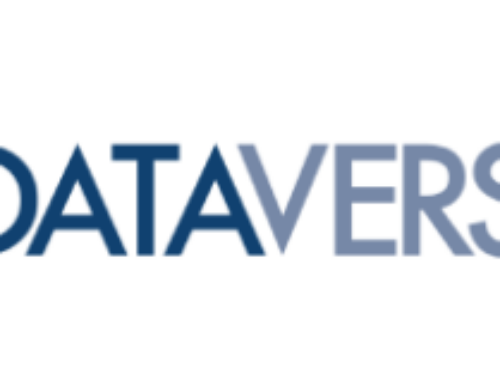The Race Is On: IBM, Google, Microsoft And AWS Aim To Deliver Machine Learning As A Cloud Service
Ever since the late 1950s, when pioneering IBM researcher Arthur Samuel trained the world’s first self-learning computer to play a mean game of checkers, the future has promised a widespread emergence of intelligent machines.
That future is here.
Machine learning, the computing methodology Samuel introduced to the world, is now seen as mature, effective and — thanks to a variety of new offerings — readily accessible to the channel.
[Related: IBM’s Watson Leader On ‘Dark Data’ And The Age Of Reason]
“For consulting companies like ours, this is the opportunity of a lifetime,” said Dj Das, CEO of Third Eye Consulting Services and Solutions, a big data and analytics solution provider in Santa Clara, Calif., that partners with four major hyper-scale cloud providers: IBM, Microsoft, Google and Amazon Web Services.
That opportunity has presented itself in a diverse spectrum of use cases, from optimizing supply chains, predicting customer buying patterns, diagnosing illnesses, detecting fraud, recognizing text and images, and improving IT performance and security.
“The clients I talk to, the partners I talk to, they understand that this is going to be a disrupter,” Ed Harbour, IBM’s vice president for implementations for Watson, Big Blue’s cloud-based cognitive computing platform, told CRN. “And whether they choose to embrace it to their advantage or whether they don’t is probably going to determine the outcome of how their businesses go forward.”
IBM is staking much of its future on cognitive computing, an analytic approach that mimics human thought processes of which machine learning is an essential component.
But IBM’s challenge won’t be to simply prove the value and viability of the technology. Big Blue is operating in an increasingly crowded market that includes hyper-scale powerhouses like Google, Microsoft and Amazon Web Services, all of which have launched platforms in the past year and a half that offer machine-learning libraries and tools as cloud services.
Where pre-cloud implementations of the technology were expensive and difficult to use, the public cloud platforms have drastically reduced the cost of entry, making it practical for solution providers to introduce machine learning for consumption at far greater scale.
“That’s why they call it the ’democratization of machine learning,'” said Orion Gebremedhin, director of technology for data and analytics at Neudesic, a Microsoft partner based in Irvine, Calif.
With libraries of prepackaged algorithms, often in the form of neural networks, combined with tools for building predictive models and big data technologies such as Hadoop and Spark, those cloud platforms are poised to usher in a wave of self-learning applications, offering businesses insight that makes them more effective and efficient.
Mick Bass, CEO of 47Lining, an AWS partner based in Boulder, Colo., told CRN that the tremendous payoff of the technology is that it can deliver “incremental benefit to a wide range of business processes.”
When sizing the opportunity for the channel from those “business process optimization savings,” Bass said, it helps to remember one economic truism: Slight upticks in efficiency can save small fortunes.
“The market is there,” IBM’s Harbour said. “IBM is not the only capable firm in this space and there’s more and more technology being introduced every day.”
Still, the race to deliver machine learning as an easy-to-consume service in the cloud is still in its early stages, Alexander Linden, a research director at Gartner who specializes in advanced analytics, told CRN.
IBM’s marketing department is “trying harder than the others,” Linden said. “But then again, just trying hard doesn’t mean you’re going to win the cup.”
IBM: Watson’s Star Turn
More than a half-century after Samuel debuted machine learning, another IBM system, Watson, took a star turn on the game show ’Jeopardy,’ beating two former human champions and demonstrating how far artificial intelligence had advanced in processing natural language, evaluating volumes of data, and making increasingly smarter decisions informed by past results.
Like Samuel’s checkers, the game-playing machine proved both a triumph of technology and brand promotion for Armonk, N.Y.-based IBM.
In the years following its ’Jeopardy’ debut, Watson was transformed into a comprehensive cloud platform on which the storied technology giant staked much of its future.
Since the platform’s launch three years ago, 740 IBM partners have earned certifications to build cognitive applications with Watson.
Greg Bonnette, vice president of strategy and innovation at Ironside, a Boston-based data analytics consulting firm that partners with IBM, believes Big Blue’s solution is the most sophisticated in the market, offering stacked algorithms that feed into each other across multiple data-evaluation and decision-making layers.
Ironside recently used Watson to build a predictive policing application for the Manchester, N.H., police department. The solution ingests troves of crime reports and other data from within the city’s 35 square miles, absorbs years of history, and suggests likely criminal hot spots for police to concentrate on. The application forecasts crime in much the same way it would weather, Bonnette said.
The result? Within 10 weeks of the system’s deployment, auto thefts in Manchester – New Hampshire’s largest city — plunged 34 percent and robberies dropped 24 percent.
The differentiator for IBM, which also is making a big push to win verticals such as health care, is “they’re trying to get really integrated into the industry problems and actual business problems,” Bonnette said.
Google: Engine For Growth
During his company’s first-quarter earnings call, Google CEO Sundar Pichai said delivering artificial intelligence and machine learning as cloud services to enterprise customers “is going be a huge source of differentiation for us.”
“We are at an exceptionally interesting tipping point where these technologies are really taking off,” Pichai told financially grounded Wall Street investors.
Google, Mountain View, Calif., is engineering solutions that can enable services partners to help customers use machine learning to understand their data, he said. A couple of weeks later, at Google’s I/O developers’ conference, Pichai revealed a new custom chip, the Tensor Processing Unit, or TPU, that will power machine-learning workloads.
One notable customer, Snapchat, already is using Google’s platform to learn more about its users by studying the content of the photos they post on the social media site.
And in March, Google enjoyed its own board game coup. AlphaGo, the creation of a Google acquisition called DeepMind, beat the world champion of the incredibly complex game of Go — a feat more difficult than checkmating a chess grandmaster. That victory was “such an important milestone for artificial intelligence,” Pichai said.
Yet while that may have telegraphed Google’s readiness to make a serious play in the market, it also, to some degree, belied Google’s current standing.
Gartner’s Linden told CRN that Google has the advantage of being “probably the largest machine-learning company on this planet by a factor of two or three.”
That’s primarily because the company’s search engine expertly implements “a massive machine-learning exercise” to place ads effectively, he said.
That’s certainly a differentiator, as Pichai claimed, for the core business. But Google has yet to sufficiently build out those capabilities as cloud services, he added.
“They are the leaders in terms of cutting-edge deployment,” Linden said. “But definitely not in terms of coming up with well-supported, easy-to-use, well-documented software.”
On that front, Google’s offerings, like the TensorFlow algorithm library and the Prediction API toolkit for building machine-learning models, are still rudimentary, not yet as valuable to data scientists as they are to software engineers, he said.
“Google Cloud ML has very cool technology. But they were late to the party,” Third Eye’s Das told CRN. “They’re now talking about it more because they’re thinking about how to approach the market with it and how to differentiate their offerings.”
Microsoft: Azure ML’s Strength
Microsoft has been evolving its machine-learning capabilities for more than two decades, and uses the technology today in Xbox, Bing and its Cortana digital assistant for Windows Phone.
The Redmond, Wash.-based company launched its machine-learning platform, Azure ML, in February 2015, and it’s “way stronger than anything Google has until now,” said Das.
Neudesic’s Gebremedhin believes Microsoft is positioned to become the machine-learning powerhouse because the platform is highly versatile and well integrated with technologies that enable data ingestion, management, transformation, cataloging and storage for batch and real-time decision-making.
Azure ML offers “multiple open-connectivity to different sources,” Gebremedhin said, from data-streaming sources to big data clusters like Hadoop, “so you’re virtually unlimited in what you can do.”
Working on a project for Arizona’s second largest utility company, Neudesic recently used Azure ML to build a platform that ingests data from more than a million connected electricity meters.
Through machine-learning algorithms that can be updated and modified based on past and current accuracy metrics, the solution better forecasts demand in the Phoenix area, Gebremedhin told CRN, resulting in more efficient energy production and cash savings for the utility.
Analyst Linden told CRN that Azure ML has “Google at a disadvantage in [its] market maturity.”
“Microsoft is definitely the visionary right now, coming up with one very tightly orchestrated runtime environment for various audiences,” Linden said.
Amazon Web Services: Built-In Advantage
Not one to cede territory to cloud competitors, AWS introduced Amazon Machine Learning in April 2015. Bass, of 47Lining, said the platform already has enabled his company to build powerful solutions for customers that, not long ago, would have been cost- and skills-prohibitive.
In one such solution, 47 Lining recently developed a predictive application for a cable company to study customer churn, increasing customer retention. For another customer, the solution provider used Amazon ML to help predict consumer credit risk.
For years, those kinds of applications were possible but inaccessible to companies that couldn’t afford ’an army of data scientists,’ Bass told CRN. But the cloud “has brought machine learning to the masses through its model of on-demand computing.”
But Amazon’s platform, much like Google’s, still lacks enterprise maturity, according to Gartner’s Linden, and needs better interfaces, broader toolsets, and a stronger focus on scientists rather than developers.
Because of Seattle-based AWS’ position at the top of the cloud market, however, Amazon ML should not be underestimated as the competition between hyper-scale providers intensifies, Linden said.
Ironside’s Bonnette told CRN that Amazon’s overall market share delivers a tremendous built-in advantage.
As enterprises start introducing machine learning to guide business processes, they will find success with the technology hinges on how effectively they archive and amass large amounts of granular data in a cloud environment, Bonnette said. And more organizations are storing data with AWS than with any other cloud provider.
“Where you do your machine learning might be dictated by where you’re already archiving and storing your data,” Bonnette said.
Internet of Things Will Spur Market
Gartner estimates that cloud-based machine learning platforms currently constitute a $1.3 billion market that’s growing at roughly 15 percent to 20 percent year over year, which “is just peanuts” to the cloud providers, Linden told CRN.
The providers are likely not making money on those businesses, and the industry is still hampered by a dearth of data scientists, he added.
But considering the emerging use cases, from natural language processing to psychological profiling to image recognition — which this year, for the first time, surpassed human capability in identifying handwritten characters — a hockey-stick-like growth boom should be expected in the not-too-distant future.
And the emerging Internet of Things market will add another vector to that growth, according to Linden.
“There’s not a single technology that’s more pervasive than machine learning,” Linden said. “The technology can be introduced into an extremely broad array of applications.”
ThirdEye’s Das said he’s seen a subtle change of late when discussing potential projects with customers.
“Whenever clients are asking,” Das said, “machine learning is no longer on a wish list, but it’s a driver” of engagements.
A recent mobile retail customer, for example, made a specific request for a self-learning conversion optimizer that helps it predict which users are more likely to join its premium service, Das told CRN.
That conversion engine now augments a team of more than 20 data analysts, helping them identify segments of their client base to target in future campaigns. That system will become increasingly effective with repeated use, Das said.
But while machine-learning solutions can be significant profit drivers, widespread adoption is going to require more than a mature technology and accessible resources.
“Ultimately, a lot of the applications you’re building on machine-learning platforms largely require some baseline acceptance of risk on the customer’s behalf because what we’re really doing is experimenting,” Ironside’s Bonnette told CRN.
Smart, self-learning machines can only make predictions, he said, not offer concrete results.
Customers need to understand “we’re not dealing in certainties,” Bonnette added.









